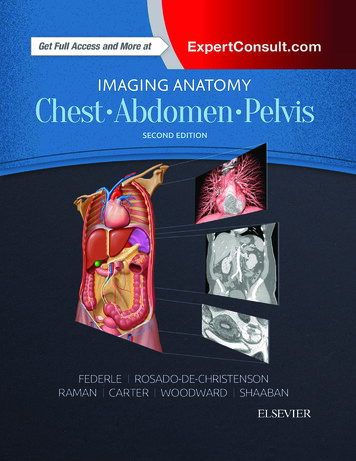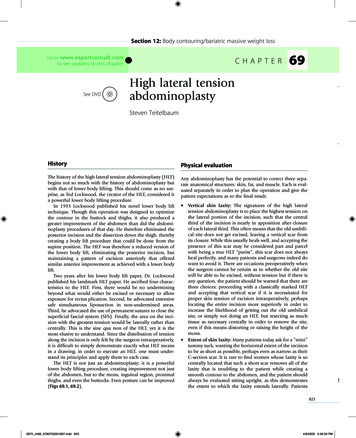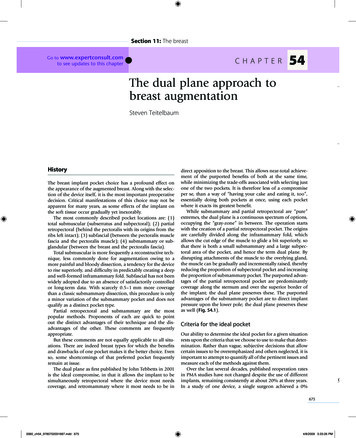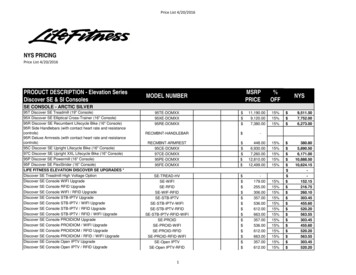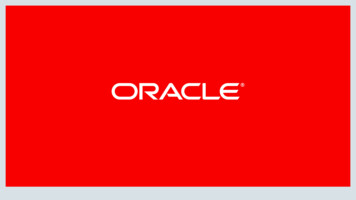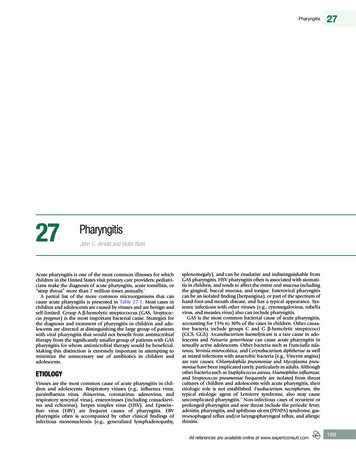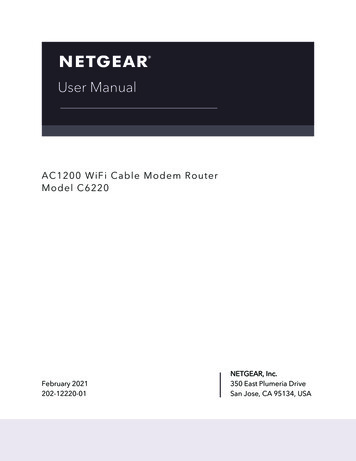
Transcription
Activate your access atexpertconsult.com1 REGISTER Visit expertconsult.com. Click “Register Now”. Fill in your user information. Click “Create Account”.2 ACTIVATE YOUR BOOK Scratch off your Activation Code below and enter it intothe “Add a title” box. You’re done! Click on the book’s title under “My Titles”.For technical assistance, email online.help@elsevier.com or call800-401-9962 (inside the US) or 1-314-995-3200 (outside the sbn 9780723435419&elsca1 doodys&elsca2 PDF&elsca3 Habif9780723435419&elsca4 frontmatter
QUICK REFERENCE FORMULARY(Topical corticosteroids are listed on the inside back cover)ACNE MEDICATIONS: RetinoidsProductBaseConcentrationPackagingRetin-A (Tretinoin)CreamGel0.025%, 0.05%, 0.1%0.01%, 0.025%20, 45 gm15, 45 gmRetin-A Micro (Tretinoin)Gel0.1%, 0.04%20, 45, 50 gm pumpTazorac (Tazarotene)GelCream0.1%, 0.05%0.1%, 0.5%30, 100 gm30, 60 gmDifferin (Adapalene)GelCream0.1%, 0.3%0.1%45 gm45 gmEpiduoGel0.1% adapalene 2.5% benzoyl peroxide45 gmACNE MEDICATIONS: Topical AntibioticsProductAntibioticsPackagingAczone5% dapsone30, 60 gm gelBenzaclin1% clindamycin 5% benzoyl peroxide25 gm, 50 gm gel, pumpBenzamycin3% erythromycin 5% benzoyl peroxide23.3, 46.6 gm gelCleocin T1% clindamycin30, 60 ml liquid, 30, 60 gm gel, 60 ml lotionDuac gel1% clindamycin 5% benzoyl peroxide45 gm gelKlaron 10%10% sodium sulfacetamide4 oz bottleClenia5% sulfur, 10% sodium sulfacetamide1 oz emollient creamSulfacet-R lotion5% sulfur, 10% sodium sulfacetamide25 ml, larger in genericAVAR cleanser5% sulfur, 10% sodium sulfacetamide8 oz pumpACNE MEDICATIONS: Oral AntibioticsGenericPreparationAdult dosage (mg unless noted)Doxycycline50, 75, 100, 150 mgEvery day, twice/dayMinocycline50, 75, 100 mgEvery day, twice/dayMinocycline extended release tablets(Solodyn)45 mg (90-131 lb), 90 mg (132-199 lb), 135 mg(200-300 lb)1 tablet every day (1 mg/kg/day)ANTINEOPLASTIC AGENTS: TopicalProductPackagingAldara5% imiquimodBox of 12 or 24 packetsCarac0.5% fluorouracil30 gm tubeFluoroplex1% fluorouracil30 ml solution, 30 gm creamEfudex2% or 5% fluorouracil5% fluorouracil10 ml liquid25 gm isbn 9780723435419&elsca1 doodys&elsca2 PDF&elsca3 Habif9780723435419&elsca4 frontmatterii
ANTIPRURITIC CREAMS AND LOTIONSProductActive ingredientPackagingEucerin itch reliefMenthol 0.15%6.8 oz sprayNeutrogena anti-itch moisturizerCamphor 0.1%, dimethicone 0.1%10.1 ozPrameGel1% pramoxine, 0.5% mentholSarna original0.5% each of camphor, menthol7.5 oz bottleSarna sensitive anti-itch lotionPramoxine HCL7.5 ozSarna Ultra anti-itch creamMenthol 0.5% and pramoxine2 ozZonalon5% doxepin45 gmATOPIC DERMATITIS: Nonsteroidal Barrier CreamsAtopiclair100 gmEletone100 gmEpiceram90 gmMimyx140 gmPSORIASIS: Topical Vitamin D3 AnalogsBrand nameActive ingredientPackagingDovonex creamCalcipotriene30, 60, 100 gm tubesVectical ointmentCalcitriol100 gm tubeTaclonex ointment, scalpCalcipotriene betamethasone60 gm, 60 mlROSACEA: Topical MedicationsBrand nameGeneric namePackagingAvar5% Sulfur, 10% sodium sulfacetamide45 gm aqueous gelAvar Green5% Sulfur, 10% sodium sulfacetamide45 gm aqueous gel with green color masks rednessClenia5% Sulfur, 10% sodium sulfacetamide1 oz cream, 6 oz, 12 oz foaming washFinacea 15%Azelaic acid30 gm gelKlaron 10%10% sodium sulfacetamide4 ozGeneric gel, cream, lotion 0.75%Metronidazole45 gm, 45 gm, 120 mlMetrogel 1%Metronidazole45 gmNoritate cream 1%Metronidazole30 gm tubeSulfacet-R lotion5% Sulfur, 10% sodium sulfacetamide25 gm bottleSKIN BLEACHES AND DEPIGMENTING AGENTSBrand nameActive ingredientPackagingGeneric4% Hydroquinone1 oz, 2 oz jarTriLuma4% Hydroquinone, 0.01% fluocinolone acetonide, 0.05% tretinoin30 n 9780723435419&elsca1 doodys&elsca2 PDF&elsca3 Habif9780723435419&elsca4 frontmatteriii
http://www.us.elsevierhealth.com/product.jsp?isbn 9780723435419&elsca1 doodys&elsca2 PDF&elsca3 Habif9780723435419&elsca4 frontmatter
CLINICALDERMATOLOGYFIFTH EDITIONA COLOR GUIDE TO DIAGNOSIS AND THERAPYThomas P. Habif, MDAdjunct Professor of Medicine (Dermatology)Dartmouth Medical SchoolHanover, NH, USAAcquisitions Editor: Claire BonnettDevelopment Editors: Sven Pinczewski and Louise CookEditorial Assistant: Kirsten LowsonProject Manager and Layout Design: Jeanne GenzCover and Page Designer: Charles GrayCompositors: Graphic World, Inc.Gary Clark, CSR; Lyn Watts, Michele Margenau, Victoria BrownImage Processing: Graphic World, Inc.Mark Lane, Tom LaneIllustrators: Graphic World, Inc.Gwen Gilbert, Trese Gloriod, Patty BassmanProject Organization: Laura A. McCannCopyeditor: Beth WelchProofreader: Denise L. DavisProduction Assistant: Natalie JacksonIndexer: Razorsharp CommunicationsPrinter: C&C Offset Printing Company, Ltd.Medical Photography: Alan N. Binnick, MD;Thomas P. Habif, MD; Lawrence B. Meyerson, MDMoral Support: Dorothy, David, and TommyActivate your access to additional online content at com/product.jsp?isbn 9780723435419&elsca1 doodys&elsca2 PDF&elsca3 Habif9780723435419&elsca4 frontmatter
MOSBY is an affiliate of Elsevier Inc 2010, Elsevier Inc. All rights reserved.First published 2010First edition published 1984Second edition published 1990Third edition published 1996Fourth edition published 2004No part of this publication may be reproduced or transmitted in any form or by any means,electronic or mechanical, including photocopying, recording, or any information storage andretrieval system, without permission in writing from the publisher. Permissions may be soughtdirectly from Elsevier’s Rights Department: phone: ( 1) 215 239 3804 (US) or ( 44) 1865 843830(UK); fax: ( 44) 1865 853333; e-mail: healthpermissions@elsevier.com. You may also completeyour request on-line via the Elsevier website at http://www.elsevier.com/permissions.ISBN: 978-0-7234-3541-9British Library Cataloguing in Publication DataHabif, Thomas P.Clinical dermatology. - 5th ed.1. Dermatology - Atlases 2. Skin - Diseases - Diagnosis Atlases 3. Skin - Diseases - Treatment - AtlasesI. Title616.5NoticeMedical knowledge is constantly changing. Standard safety precautions must be followed, but asnew research and clinical experience broaden our knowledge, changes in treatment and drug therapy may become necessary or appropriate. Readers are advised to check the most current productinformation provided by the manufacturer of each drug to be administered to verify the recommended dose, the method and duration of administration, and contraindications. It is the responsibility of the practitioner, relying on experience and knowledge of the patient, to determine dosagesand the best treatment for each individual patient. Neither the Publisher nor the author assumesany liability for any injury and/or damage to persons or property arising from this publication.Printed in ChinaLast digit is the print number: 9 8 7 6 5 4 3 2 1http://www.us.elsevierhealth.com/product.jsp?isbn 9780723435419&elsca1 doodys&elsca2 PDF&elsca3 Habif9780723435419&elsca4 frontmatter
PrefaceClinical Dermatology is intended to be a practical resourcefor the clinician. Over 1500 illustrations are combinedwith disease descriptions and current and comprehensivetherapeutic information. Bold headings are used to facilitate rapid access to information.RAPID ACCESS TO THE TEXT1. Disorders Index: A list of diseases with page referencesis located inside the front cover. This is the best placeto start if you know the diagnosis.2. Chapter 1—Regional Differential Diagnosis Atlas: New tothe fifth edition, this very large section with page references will help you to narrow the differential diagnosis.3. A list of topical corticosteroids can be found on the inside back cover.4. The complete Dermatologic Formulary, previously inthe book, can now be found online (using your logindetails), and we are able to offer updates. However, aQuick Reference Formulary to the most commonly useddrugs is on pp. ii-iii.PMID numbers (PubMed identificationnumbers)References are no longer placed at the end of the chapter.They have been replaced by PMID numbers (blue lettersand numbers) and are embedded in the text. Go toPubMed’s home page. Be sure the search box is empty.There should be no limits set on the left-hand limits tab.Type in just the number in the search line and click on Go.You will be taken to the paper and abstract. Classic references and PMID numbers are found in tables and boxes.Web-based textThe book with extra images and a mannequin-based aid todiagnosis are provided.Web-based formularyNew therapeutic agents often become available. Therefore,the Dermatologic Formulary has been moved online. Theformulary may be printed and kept as a separate document. The formulary will be updated regularly.Text organization and contentThe classic method of organizing skin diseases is used.Common diseases are covered in depth. Illustrations ofclassic examples of these disorders and photographs ofvariations seen at different stages are included. Theoreticalinformation, disease mechanisms, and rare diseases arefound in comprehensive textbooks.HOW TO USE THIS BOOKStudents in the classroomStudents should learn the primary and secondary lesionsand look at every page in the Regional Differential DiagnosisAtlas at the end of Chapter 1. Select a few familiar diseasesfrom each list and read about them. Obtain an overview ofthe text. Turn the pages, look at the pictures, and read thecaptions.Students in the clinicYou see skin abnormalities every day in the clinic. Try toidentify these diseases, or ask for assistance. Study all diseases, especially tumors, with a magnifying glass or anocular lens. Read about what you see and you will rapidlygain a broad fund of knowledge.Study Chapters 20 (Benign Skin Tumors), 21 (Premalignant and Malignant Nonmelanoma Skin Tumors), and22 (Nevi and Malignant Melanoma). Skin growths arecommon, and it is important to recognize their features.House officers are responsible for patient management.Read Chapter 2 carefully, and study all aspects of the use oftopical steroids. These agents are used to treat a variety ofskin conditions. It is tempting to use these agents as a therapeutic trial and ask for a consultation only if therapy fails.Topical steroids mask some diseases, make some diseasesworse, and create other diseases. Do not develop bad habits;if you do not know what a disease is, do not treat it.The diagnosis of skin disease is deceptively easy. Do notmake hasty diagnoses. Take a history, study primary p?isbn 9780723435419&elsca1 doodys&elsca2 PDF&elsca3 Habif9780723435419&elsca4 frontmattervii
Clinical Dermatologyand the distribution, and be deliberate and methodical.Ask for help. With time and experience you will feel comfortable managing many common skin diseases.The non-dermatologist providerMost skin diseases are treated by non-dermatologist providers. This includes primary care physicians, nurse practitioners and physician assistants. Clinicians involved in direct patient care should read the above guidelines for usingthis book. Look at the Regional Differential Diagnosis Atlasin Chapter 1 as a general guide. Learn a few topical steroidsin each potency group. There are a great number of agentsin the Dermatologic Formulary. Many in each table containsimilar ingredients and have the same therapeutic effect.Develop an armamentarium of agents and gain experiencein their use.Inflammatory conditions are often confusing, andsometimes biopsies are of limited value in their diagnosis.Eczema is common, read Chapters 2 and 3. Acne is seeneveryday, read Chapter 7. Managing acne effectively willprovide a great service to many young patients who arevery uncomfortable with their appearance. The clinical diagnosis of pigmented lesions is complicated. Look atChapters 20, 21, and 23. Don’t be afraid to ask for help. Adermatologist can often make a diagnosis without theneed for a biopsy.The dermatologistUse the Disorders Index on the inside front cover to rapidlyaccess the text. Many dermatologists use the pictures as anaid to reassure patients. Examine the patient, make a diagnosis, and then show them an illustration of their disease.Many patients see the similarity and are reassured.This book is designed to be a practical resource. All ofthe most current descriptive and therapeutic informationthat is practical and relevant has been included. All topicsare researched on Medline. Details about basic science andcomplex mechanisms of disease can be found elsewhere.Rare diseases are found in larger textbooks.IMAGESThe photographs were taken with film and digital cameras.The images for this text come from three main sources.Alan N. Binnick, MD, Adjunct Assistant Professor of Medicine (Dermatology), Dartmouth Medical School, andLawrence B. Meyerson, Clinical Associate Professor of Dermatology at the University of Texas Southwestern MedicalSchool provided very large collections of images takenwith transparency film. I provided film and digital images.Transparency film images are in many ways superior todigital images. Each contributor has over 30 years experience as a dermatologist and a medical photographer. Acombination of these three collections with over 23,000images can be found at www.dermnet.com.PRODUCTIONManufacturing an illustrated book is a complicated process. The large number of people involved in this effort islisted on the title page. As my first editor said 25 years ago,“If people ever realized what was involved in making abook, they would not believe that it could ever get done.”The layout and design of each page in this book is donethe “old fashioned way,” by cutting and pasting imagesand strips of text by the layout artist. Page layout design isa science and an art. Jeanne Genz has done the page layoutfor all five editions of this book. This older, slower, noncomputerized technique performed by an expert producespages that are balanced and of maximum clarity. The final“pasted” book is then converted to a digital file and thenconverted to a pdf file that is sent to the printer who mustbalance color through a calibration process. The book isprinted in China on high-grade glossy paper on a sheet-fedpress. Glossy paper retains ink at the surface to enhancedefinition. Sheet-fed presses print slowly and allow ink tobe laid down precisely so that exceptional sharpness andcolor balance are achieved.Thomas P. jsp?isbn 9780723435419&elsca1 doodys&elsca2 PDF&elsca3 Habif9780723435419&elsca4 frontmatterviii
ContentsDisorders Index.Inside front coverQuick Reference Formulary . i-iiPreface . vii1 Principles of Diagnosis and Anatomy 1Skin anatomy . 1Diagnosis of skin disease. 2Primary lesions. 3Secondary lesions .12Special skin lesions .17Regional differential diagnosis atlas .192 Topical Therapy and TopicalCorticosteroids 756 Urticaria and Angioedema 181Clinical aspects .182Pathophysiology.185Initial evaluation of all patients with urticaria .186Acute urticaria .186Chronic urticaria .188Treatment of urticaria . 191Physical urticarias.194Angioedema.200Contact urticaria syndrome . 207Pruritic urticarial papules and plaques of pregnancy . 207Urticarial vasculitis.209Serum sickness . 210Mastocytosis .2117 Acne, Rosacea, and Related Disorders 217Topical therapy .75Topical corticosteroids .773 Eczema and Hand Dermatitis 91Stages of eczematous inflammation . 91Hand eczema . 100Eczema: various presentations .110Chapped fissured feet . 113Self-inflicted dermatoses. 115Psychogenic parasitosis. 121Stasis dermatitis and venous ulceration:postphlebitic syndromes .1224 Contact Dermatitis and Patch Testing 130Irritant contact dermatitis. 131Allergic contact dermatitis .133Diagnosis of contact dermatitis .148Acne . 217Acne surgery .252Perioral dermatitis.253Rosacea (acne rosacea) .256Hidradenitis suppurativa .260Miliaria .2638 Psoriasis and Other PapulosquamousDiseases 264Psoriasis .264Pityriasis rubra pilaris .309Seborrheic dermatitis . 312Pityriasis rosea . 316Lichen planus .320Lichen sclerosus et atrophicus.327Pityriasis lichenoides .332Grover’s disease .3349 Bacterial Infections5 Atopic Dermatitis335154Pathogenesis and immunology.156Clinical aspects .156Associated features .167Triggering factors .172Treatment of atopic dermatitis .172Skin infections.335Folliculitis . 351Furuncles and carbuncles .356Erysipeloid .359Blistering distal dactylitis.359Staphylococcal scalded skin ct.jsp?isbn 9780723435419&elsca1 doodys&elsca2 PDF&elsca3 Habif9780723435419&elsca4 frontmatterix
Clinical DermatologyPseudomonas aeruginosa infection .363Meningococcemia . 371Nontuberculous mycobacteria .37910 Sexually Transmitted Bacterial Infections 382Sexually transmitted disease presentations .382Genital ulcers .385Syphilis .396Rare sexually transmitted diseases .408Diseases characterized by urethritis and cervicitis . 41311 Sexually Transmitted Viral Infections 419Genital warts . 419Bowenoid papulosis.427Molluscum contagiosum .428Genital herpes simplex . 431Acquired immunodeficiency syndrome .44412 Warts, Herpes Simplex, and Other ViralInfections 454Warts .454Molluscum contagiosum .465Herpes simplex .467Varicella.474Herpes zoster .47913 Superficial Fungal Infections 491Dermatophyte fungal infections . 491Candidiasis (moniliasis) .523Tinea versicolor .53714 Exanthems and Drug Eruptions 541Exanthems .544Drug eruptions: clinical patterns and mostfrequently causal drugs .570Drug eruptions .57515 Infestations and Bites 581Scabies .582Pediculosis .590Caterpillar dermatitis .594Spiders .596Ticks .600Cat-scratch and related diseases . 614Animal and human bites. 616Stinging insects.620Biting insects . 621Creeping eruption .625Ants .626Dermatitis associated with swimming .627Leishmaniasis .63216 Vesicular and Bullous Diseases 635Blisters.635Diagnosis of bullous disorders .638Dermatitis herpetiformis and linear IgA bullousdermatosis.642Bullae in diabetic persons .646Pemphigus .647The pemphigoid group of diseases .655Pemphigoid-like disease . 661Benign familial chronic pemphigus .662Epidermolysis bullosa.664The newborn with blisters, pustules, erosions,and ulcerations .66517 Connective Tissue Diseases 671Autoimmune diseases . 671Connective tissue diseases .672Lupus erythematosus .678Dermatomyositis and polymyositis .692Scleroderma .70018 Hypersensitivity Syndromesand Vasculitis 710Hypersensitivity syndromes . 710Erythema multiforme . 710Stevens-Johnson syndrome/toxic epidermalnecrolysis spectrum of disease. 714Erythema nodosum .720Vasculitis .722Vasculitis of small vessels .726Neutrophilic dermatoses .734Schamberg’s disease .74019 Light-Related Diseases and Disordersof Pigmentation 741Photobiology . 741Sun-damaged skin.743Suntan and sunburn .747Sun protection .747Polymorphous light eruption .750Hydroa aestivale and hydroa vacciniforme .752Porphyrias .754Phototoxic reactions . 761Photoallergy .764Disorders of hypopigmentation.764Disorders of hyperpigmentation . bn 9780723435419&elsca1 doodys&elsca2 PDF&elsca3 Habif9780723435419&elsca4 frontmatterx
Contents20 Benign Skin Tumors 776Seborrheic keratoses .776Stucco keratoses .784Skin tags (acrochordon) and polyps .784Dermatosis papulosa nigra.786Cutaneous horn .786Dermatofibroma .787Hypertrophic scars and keloids.788Keratoacanthoma .790Epidermal nevus .792Nevus sebaceous .794Chondrodermatitis nodularis helicis.795Epidermal cyst .796Pilar cyst (wen) .798Senile sebaceous hyperplasia .799Syringoma.80021 Premalignant and Malignant NonmelanomaSkin Tumors 801Basal cell carcinoma. 801Actinic keratosis . 812Squamous cell carcinoma in situ .820Bowen’s disease . 821Erythroplasia of Queyrat .823Arsenical keratoses and other arsenic-relatedskin diseases.824Squamous cell carcinoma.824Leukoplakia .829Verrucous carcinoma.830Primary cutaneous lymphomas . 831Cutaneous T-cell lymphoma .832Paget’s disease of the breast.843Extramammary Paget’s disease .844Cutaneous metastasis .84522 Nevi and Malignant Melanoma 847Melanocytic nevi .847Malignant melanoma .860Management of melanoma .872Staging and prognosis.875Treatment of lentigo maligna.879Dermoscopy .88023 Vascular Tumors and Malformations 891Congenital vascular lesions . 891Acquired vascular lesions .904Telangiectasias . 91024 Hair Diseases913Evaluation of hair loss . 917Generalized hair loss .920Localized hair loss.922Trichomycosis .94625 Nail Diseases947Anatomy and physiology.947Normal variations .950Nail
Activate your access at expertconsult.com 1 REGISTER † Visit expertconsult.com. † Click "Register Now". † Fill in your user information. † Click "Create Account". 2 ACTIVATE YOUR BOOK † Scratch off your Activation Code below and enter it into the "Add a title" box. † You're done!Click on the book's title under "My Titles".
